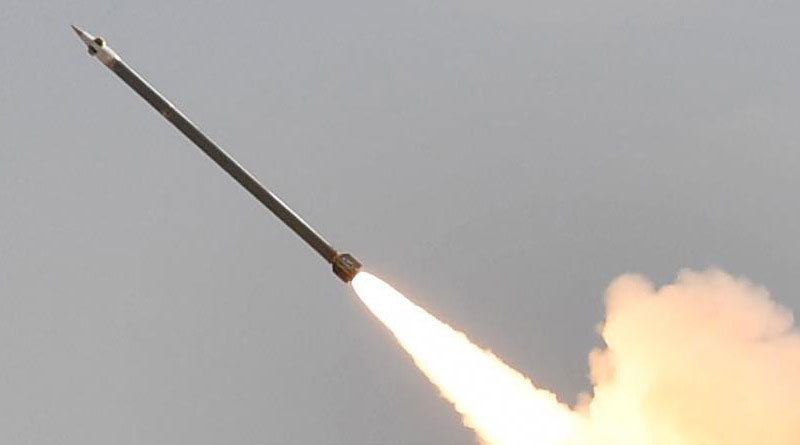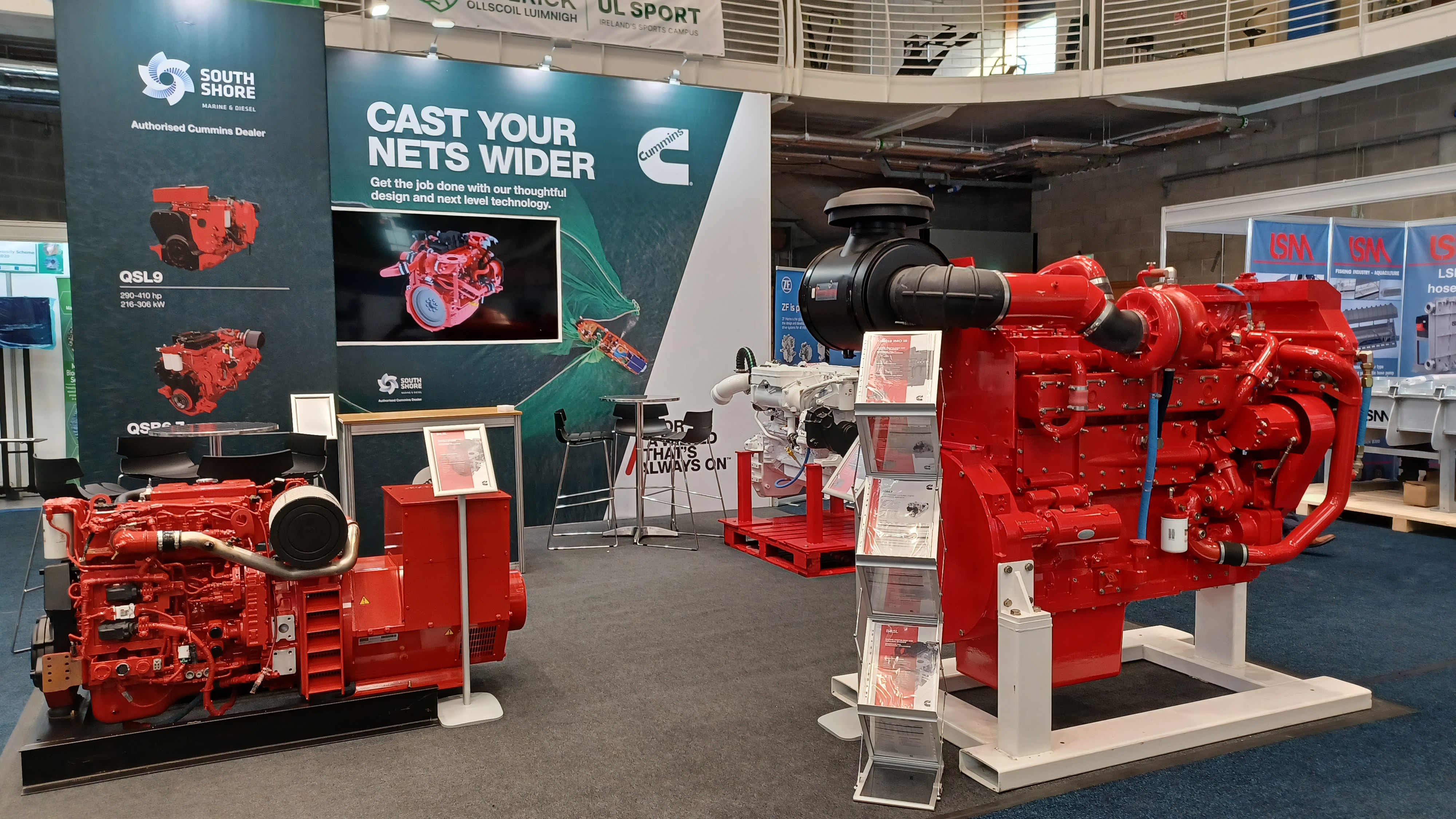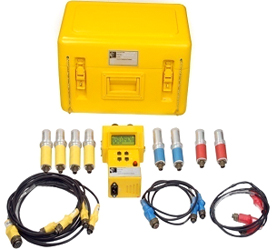SOURCE: AFI

The Astra MkII, India’s advanced medium-range air-to-air missile, is set to elevate the Indian Air Force’s (IAF) aerial combat capabilities to new heights. Classified in the same category as the AIM-120D Advanced Medium Range Air-to-Air Missile (AMRAAM), the Astra MkII is designed to engage enemy aircraft at extended ranges, providing India with a strategic edge in air superiority. With a potential range of over 160 kilometers when launched from high altitudes, the Astra MkII stands on par with some of the most sophisticated long-range air-to-air missiles globally.
Developed by the Defence Research and Development Organisation (DRDO) of India, the Astra MkII is a beyond-visual-range (BVR) missile equipped with advanced technologies that allow it to strike enemy platforms with high accuracy. The missile features a dual-pulse rocket motor and advanced guidance systems, including an inertial navigation system (INS) with an active radar seeker. These systems provide the missile with exceptional maneuverability and precision, allowing it to track and engage highly agile targets in contested environments.
Continue readingSOURCE: AFI

In a significant milestone for India’s burgeoning space industry, Space Zone India, in collaboration with the Martin Group, successfully launched its first reusable hybrid rocket, RHUMI 1, today. The launch took place from Thiruvidanthai beach, near Mamallapuram, Tamil Nadu, at 7 am. The RHUMI 1 rocket, a pioneering development in reusable rocket technology, carried three test satellites into a suborbital trajectory.
RHUMI 1 stands as a testament to India’s growing capabilities in space exploration and satellite deployment. With a height of 3.50 meters and a range of 80 kilometers, RHUMI 1 is designed to reach high altitudes while maintaining reusability—a key feature that sets it apart from traditional rockets. The rocket’s hybrid propulsion system combines elements of both solid and liquid rocket engines, allowing for greater control and efficiency during flight. This technology also contributes to significant cost savings, as the rocket can be recovered and reused for multiple launches, reducing the need for new rockets and thereby cutting costs.
Continue readingSOURCE: AFI

In a recent video that has captured the attention of military enthusiasts, the Advanced Towed Artillery Gun System (ATAGS) showcased its impressive mobility in high-altitude terrain. This 155 mm/52 caliber howitzer, developed indigenously by India, demonstrated its ability to navigate challenging terrain with ease.
Equipped with a powerful 110 KW engine, ATAGS has achieved remarkable speeds. It can reach speeds of over 18-19 kilometers per hour (Kmph) in self-propelled (SP) mode on roads and 10 Kmph when moving cross-country. This impressive performance is a testament to the engineering prowess behind ATAGS.
Continue readingSOURCE: AFI

Meprolight, a leading Israeli manufacturer of electro-optical sights for the defense and law enforcement industries, has strengthened its presence in India with the establishment of a new assembly line in partnership with RRP S4E Innovation Pvt Ltd (Mumbai). This strategic move comes in response to the increasing demand for Meprolight’s advanced sights in the Indian market.
The technology transfer agreement between Meprolight and RRP S4E Innovation will enable the Indian company to assemble and manufacture three of Meprolight’s most popular sights:
Continue readingSOURCE: IDRW.ORG TEAM

The Defence Research and Development Organisation (DRDO) of India has developed the guided Pinaka system, a highly accurate artillery rocket system with a range of 90 kilometers. This system is now attracting significant attention from Eastern European countries. While DRDO remains tight-lipped about the specific countries involved, sources indicate that negotiations are ongoing with at least two nations in the region.
The growing interest follows India’s success in exporting the Pinaka system to Armenia, a deal that has spurred interest in other countries as well, including those in Southeast Asia. The guided Pinaka system, which was initially an unguided rocket, has been transformed into a high-precision weapon through the integration of a Guidance, Navigation & Control (GNC) kit developed by the Research Centre Imarat (RCI), a laboratory under DRDO.
Continue readingSOURCE: IDRW.ORG TEAM

Marine Electricals (India) Limited has entered into a strategic memorandum of understanding (MoU) with Cummins India to jointly manufacture and supply pumps for Indian Navy ships. This collaboration aims to strengthen India’s indigenous defense capabilities and meet the growing requirements of the naval fleet.
Under the terms of the MoU, Marine Electricals will be responsible for manufacturing pumps specifically designed for naval applications. Cummins India, a global leader in power solutions, will provide its expertise and technology to support the manufacturing process. The partnership will also include supply, commissioning, and after-sales services for the pumps, ensuring their optimal performance and reliability.
Continue readingSOURCE: AFI

According to several Pakistani OSINT (Open-Source Intelligence) handles on X (formerly Twitter), a drone believed to belong to Indian forces reportedly crossed the Line of Control (LoC) from Peer Kalanjar and subsequently disappeared into the forests near the village of Sritanghal, in Kotli, Pakistan-Occupied Kashmir (PoK). The wreckage of the drone was later located with the assistance of Pakistani security forces and is currently in the custody of Pakistani Special Forces.
Images posted by these OSINT handles suggest that the drone is likely a SWITCH UAV, a fixed-wing and VTOL (Vertical Take-Off and Landing) hybrid unmanned aerial vehicle (UAV). The SWITCH UAV, manufactured by ideaForge, is designed for tactical operations and is known for its capability to transition between fixed-wing flight for endurance and VTOL mode for precise take-offs and landings. With a range of approximately 15 km, the SWITCH UAV is typically used for surveillance and reconnaissance missions.
Continue readingSOURCE: AFI

In light of the recent accidental release of an air store from an Indian Air Force (IAF) fighter jet, Pinaka Aerospace has offered a potential solution to prevent such incidents. The company believes that stray voltage was likely the cause of the mishap and has highlighted its No Volts Cum Pulse Tester (NVCPT) as a preventive measure.
Pinaka Aerospace, a leading provider of aerospace engineering solutions, has been manufacturing the NVCPT since 2012. This handheld tester is designed to detect and prevent stray voltages that can trigger accidental weapon releases. The company has already sold over 100 units of the NVCPT to both Hindustan Aeronautics Limited (HAL) and the IAF for their Tejas-LCA fleet.
Continue readingSOURCE: AFI

Paras Defence and Space Technologies Limited announced today that it has received an industrial license from the Industrial Licensing Section of the Department for Promotion of Industry & Internal Trade (DPIIT), Ministry of Commerce & Industry. The license allows the company to establish an industrial undertaking for the manufacturing of a wide range of defense products, marking a significant step forward in India’s defense manufacturing sector.
According to the company’s official statement, the new license authorizes Paras Defence to manufacture several high-tech defense products. These include infrared or thermal imaging equipment such as monoculars, binoculars, cameras, and sights; both cooled and uncooled camera tube-based sights; electro-optics systems including day and night vision cameras, and security surveillance systems; subsystems and platforms for radar systems; and various opto-mechanical and opto-electronic assemblies.
Continue readingSOURCE: AFI

A group of Tanzanian People’s Defence Force (TPDF) personnel successfully completed advanced training in operating Infantry Combat Vehicles (ICVs) at the Mechanized Infantry Centre & School (MIC&S) in Ahmednagar, India. The training included crucial floatation exercises, demonstrating the versatility and capabilities of the ICVs.
This joint training initiative underscores the growing global defense partnerships and strengthens the bond between India and Tanzania. The TPDF personnel have been immersed in a comprehensive training program, learning about the various systems of the ICV, including its automation, armament, and operation. They have honed their skills in driving, gunnery, and tactical maneuvers.
Continue readingSOURCE: AFI

A US Army delegation visited the Indian Army School of Artillery from August 20-22, 2024, for the 26th India-USA Executive Steering Group meeting. The discussions focused on enhancing institutional linkages and sharing best practices between the two armies.
The delegation visited various faculties and training facilities at the school and also witnessed live firing demonstrations. The Indian Army showcased its K-9 Vajra and Dhanush towed guns, as well as the Swathi Weapons Locating Radar.
Continue readingSOURCE: RAUNAK KUNDE / NEWS BEAT / IDRW.ORG

The Indian Air Force (IAF) is setting its sights on a groundbreaking tactical innovation: deploying loitering munitions from its fleet of C-130J Super Hercules military transport aircraft. This concept, already being explored by the United States Air Force (USAF), has the potential to transform the IAF’s offensive capabilities.
Loitering munitions, also known as kamikaze drones, are small, unmanned aerial vehicles (UAVs) armed with explosives. They can loiter over an area for extended periods, waiting for targets before attacking.
Continue readingSOURCE: RAUNAK KUNDE / NEWS BEAT / IDRW.ORG

The Defence Research and Development Organisation (DRDO) is set to enhance the underwater capabilities of the Indian Navy’s Kilo-class submarines with the upgraded USHUS-2 sonar suite. This state-of-the-art system, developed by the Naval Physical and Oceanographic Laboratory (NPOL), will replace the older USHUS sonars on the remaining 3 Kilo-class submarines.
Currently, five of the nine frontline Kilo-class submarines, also known as EKM-class, are equipped with the earlier version of the USHUS sonar system out of which Two have been retired or transferred.
Continue readingSOURCE: RAUNAK KUNDE / NEWS BEAT / IDRW.ORG

The Indian Air Force (IAF) has issued an Expression of Interest (EOI) for comprehensive maintenance services for its fleet of 73 PC-7 MKII aircraft. This tender, identified by the reference number AirHQ/85902/1/ENGBT(LGSPC7), falls under the Miscellaneous Services category and will be conducted as a single-stage bidding process.
The EOI seeks to engage qualified contractors who will be responsible for delivering extensive maintenance services for the PC-7 MKII aircraft. These aircraft are integral to the IAF’s training operations and are stationed at two key locations which are Air Force Academy (AFA) Hyderabad and Air Force Station (AFS) Tambram.
Continue readingSOURCE: AFI

A technical snag on an Indian Air Force (IAF) Su-30MKI fighter jet led to the inadvertent release of an “air store” near the Pokhran testing range in Rajasthan, causing a blast and creating a crater at the impact site. Fortunately, no damage to life or property has been reported, but the incident has raised concerns about the safety protocols of military exercises conducted near populated areas.
According to India Today reports, the practice bomb fell in an open area near a village close to the Pokhran Field Firing Range. The explosion created a loud noise, and a crater was visible at the impact site. Eyewitnesses described hearing a loud bang and feeling the ground shake. However, idrw.org suggest that the wreckage found at the site does not resemble that of a typical practice bomb, but rather appears to be from a missile system.
Continue reading